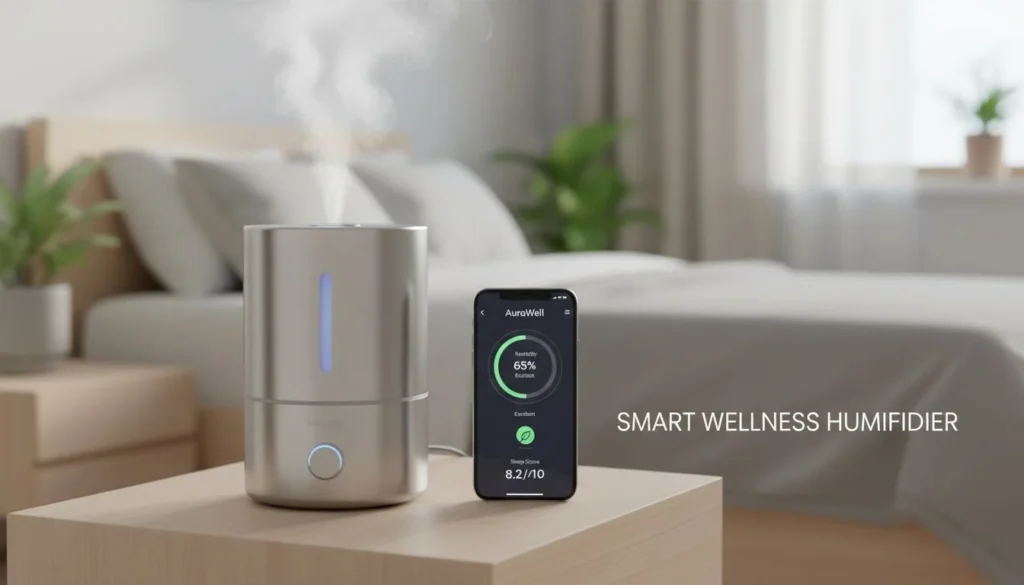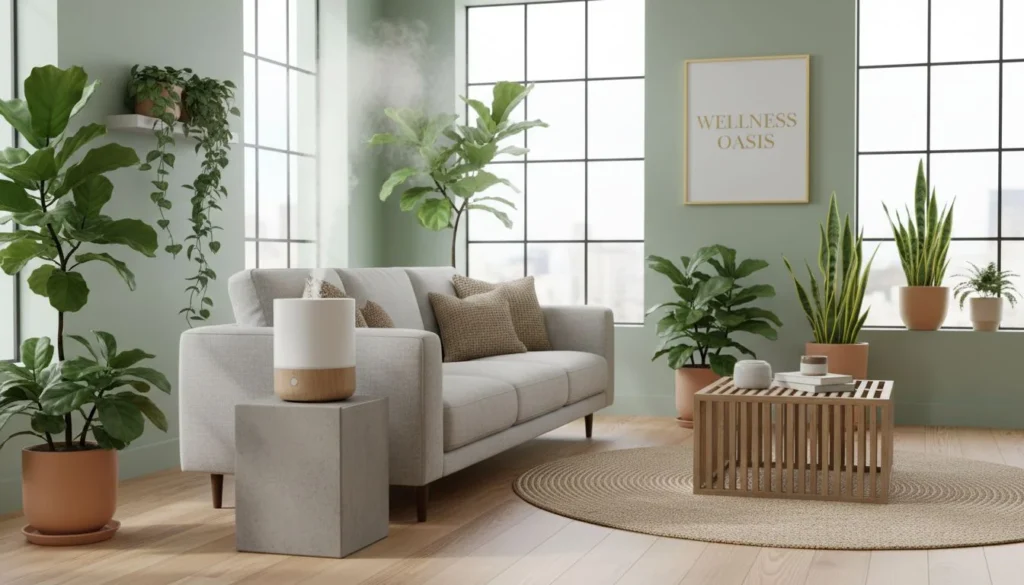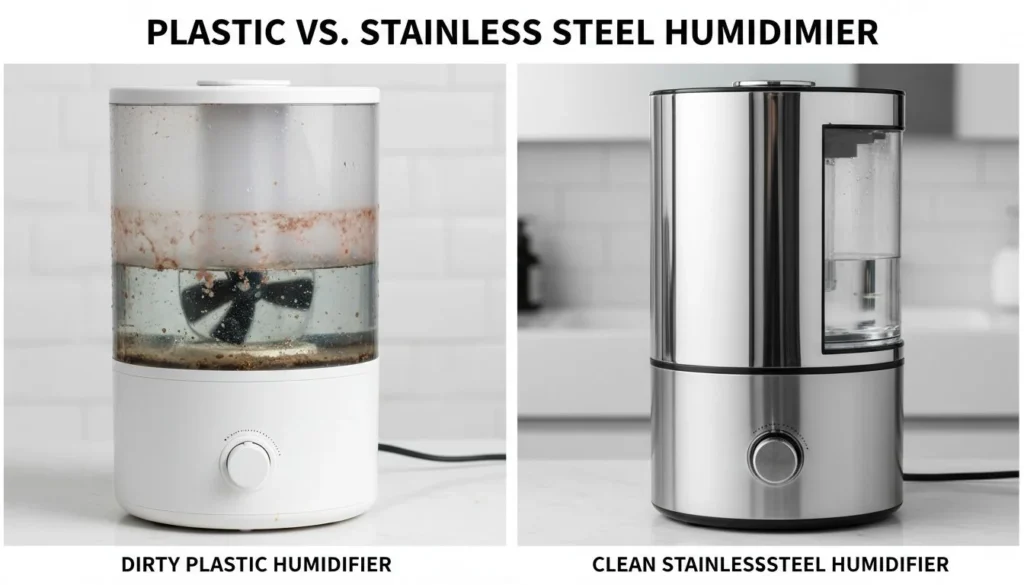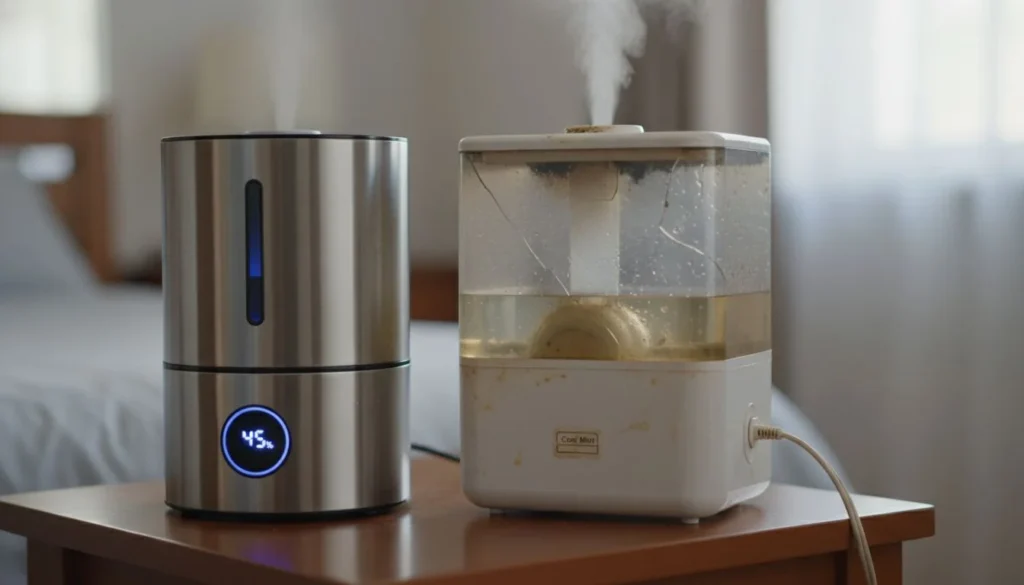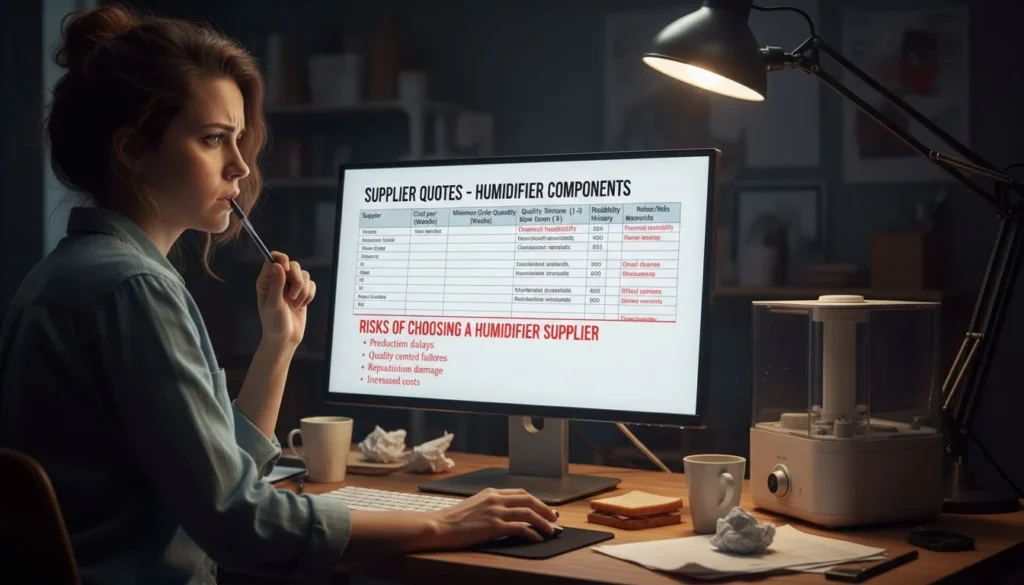HVAC機器や空気清浄機に取り付けられているエアフィルターの品質や作りは同じではありません。これらのフィルターを分析する一つの方法は、MERVレーティングを使用することです。このシステムについての詳細をお読みください。
空気は移動しながら、空気清浄機やその他のHVACシステムを通過し、最終的にさまざまなフィルターを通過する。空気清浄機の場合、フィルターはアレルゲン、ほこり、病原菌など、空気中に存在するさまざまな汚染物質を捕捉する。
しかし、すべての空気清浄機が同じというわけではない。ほとんどの場合、フィルターの品質に違いがある。そこで、家庭に最適なMERV値とは何か、そしてそれがどのようにエアフィルターの性能を評価するのに役立つのかを学ぶ必要があるかもしれない。
MERVフィルター格付けとは
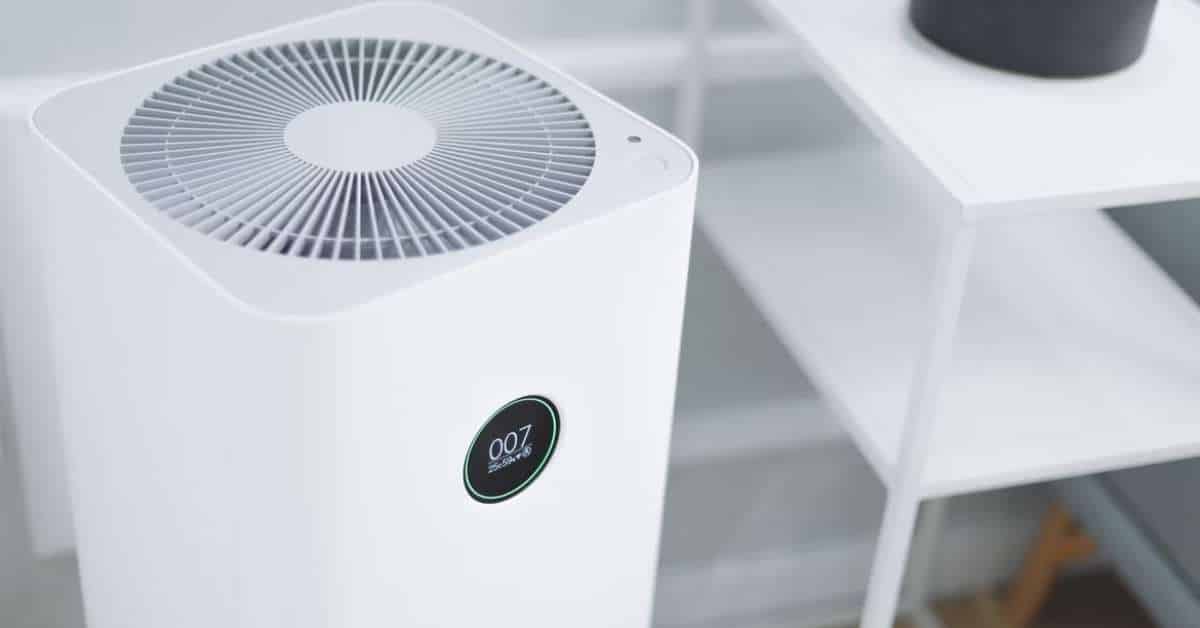
画像ソース アンスプラッシュ
空気清浄機の世界に初めて足を踏み入れた方は、MERV(マーブ)評価とは何かご存じないでしょう。具体的には、MERV評価とは 最低効率報告値.これはフィルターに付けられた呼称であり、空気清浄機全体に付けられた呼称ではない。
一言で言えば、家庭用フィルターのMERVレーティングは、通過するさまざまな空気中の汚染物質を捕捉する際の特定のフィルターの効率を示している。また、MERV値が高いフィルターは、小さな粒子を捕捉するのに優れていることが知られています。
したがって、HEPAフィルターが空気中の微細な粒子や物質を捕捉するように設計されていることを考慮すると、MERVフィルターの格付けが最も高いのは普通である。
FP、MLB、MPR:それぞれの違い
について 米国暖房冷凍空調学会 (ASHRAE)がMERVシステムを考案した。 ASHRAEの説明によると、MERVの目的は、消費者がこれらのフィルターの性能を理解し、家庭にとって理想的なMERV値を見つけるのを助けることである。
しかし、空気清浄機を評価する唯一のメートル法ではない。MPRとFPRがまだある。
エアフィルターFPRの意味と性能
フィルター性能評価(FPR)は、空気清浄機が空気中の粒子をどれだけ除去できるかを示す指標です。FPRが高いほど、清浄機の粒子除去能力は高く、4~10の範囲で評価されます。FPRは、清浄機が除去できる粒子の大きさに基づいており、最も小さい粒子が最も除去しにくい。この測定はホームデポによって行われます。
FPRとMERVの違い
| フィルターのFPR定格 | MERV定格相当 | 汚染物質の種類 |
| 4 | MERV 8 - 10 | ホコリ、糸くず、ダニ、カビ |
| 5 | ||
| 6 | MERV 11 - 12 | ホコリ、糸くず、ダニ、カビ、ペットのフケ、煙、スモッグ |
| 7 | ||
| 8 | MERV 13 - 16 | ホコリ、糸くず、ダニ、カビ、ペットのフケ、煙、スモッグ、バクテリア、ウイルス |
| 9 | ||
| 10 |
ベストFPRエアフィルターブランド
FPR規格でテストされたエアフィルター・ブランドは多くない。しかし、ホームセンターで売られている空気清浄機には、FPRテスト済みのエアフィルターがある。そのひとつが ハネウェル.
MPR
微小粒子性能評価(MPR)とは、空気中の1ミクロン以下の微小粒子を除去するエアフィルターの能力を評価する方法である。これは3M社による評価です。MPRが高いほど、フィルターの粒子除去能力が高いことを意味します。MPRシステムは、0.3ミクロンから1ミクロンの粒子を除去するフィルターの能力のみを評価します。
FPRとMERVの違い
| フィルターのMPR評価 | MERV定格相当 | 汚染物質の種類 |
| 300 | MERV 6 - 7 | ホコリと糸くず |
| 600 | MERV 8 - 10 | ホコリ、糸くず、ダニ、カビ |
| 800 | ||
| 1000 | MERV 11 - 12 | ホコリ、糸くず、ダニ、カビ、ペットのフケ、煙、スモッグ |
| 1200 | ||
| 1500 | MERV 13 - 16 | ホコリ、糸くず、ダニ、カビ、ペットのフケ、煙、スモッグ、バクテリア、ウイルス |
| 1900 |
ベストFPRエアフィルターブランド
エアフィルターのFPR評価は、MERVと同様に重要である。これは、空気中の粒子を除去するエアフィルターの性能を示す。そのため、いくつかの空気清浄機ブランドは、この指標で認定されたフィルターを持っている。そのひとつが、空気清浄機ブランドのFiltrete(フィルトリート)だ。
MERV
前述の通り、MERVはMinimum Efficiency Reporting Value(最小効率報告値)の略です。具体的には、0.3ミクロンから10ミクロンの粒子や物質を捕捉するフィルターの能力を測定します。
である。 米国暖房冷凍空調学会 (ASHRAE)が考案したものである。 ASHRAEの説明によると、MERVの目的は、消費者がこれらのフィルターの性能を理解し、家庭にとって理想的なMERV値を見つけるのを助けることである。
フィルターのMERV評価:なぜ重要なのか?

画像ソース アンスプラッシュ
なぜMERVについて語ることが必要なのか?それは次のような理由からです:
COVID-19
MERVの高いフィルターは、この致死的な病気の原因となるウイルスを捕らえるのに効果的です。空気清浄機には、以下の可能性を減らすために、医療グレードのフィルターが必要です。 室内でのCOVID-19伝送.
ASHRAEによると、COVID-19にはMERV等級13のフィルターが適しています。しかし、室内の空気をCOVID-19から確実に守るためには、MERV14以上のフィルターを手に入れることができればなお良いでしょう。
山火事
山火事が発生しやすい地域にお住まいの方は、MERV値の高い空気清浄機を優先的に選ぶ必要があります。山火事は、たとえ火の手が迫っていなかったとしても、非常に危険である。山火事が発生させる煙は有毒な粒子を運び、健康に影響を及ぼす可能性がある。
エネルギー効率
MERVの評価が高いエアフィルターは、空気中のさまざまな汚染物質の存在を低減することができる。空気清浄機にこのようなフィルターがあれば、外部換気はもはや必要ないかもしれない。
ドアや窓を開ける必要がなくなれば、エネルギー消費もよくなる。結局のところ、冷房や暖房などの空調システムに過度に頼る必要がなくなるのだ。もちろん、省エネは強力な空気清浄機を手に入れる特典のひとつだ。
MERV評価チャート
最大の数値が室内空気の問題に対する最善の解決策とは限らないことを常に覚えておいてください。例えば、推奨されているMERV値よりも高いエアフィルターを使用すると、空気清浄機の性能が低下する可能性があります。
この時点ですでに、本物のMERV評価表を見てもらうことが不可欠である。後者は、エアフィルターとその適切な使用方法を理解するための参考資料として使用することができます。
| 基準5.2 最小効率報告値 | ダストスポット効率 | 平均アレスタンス | 一般的に管理されている汚染物質 | 一般的な用途と応用 | フィルターの種類 | 具体的な格付けと用途 |
| 20
19 18 17 |
該当なし
該当なし 該当なし 該当なし |
該当なし
該当なし 該当なし 該当なし |
<0.30ミクロン粒子
未添付ウイルス カーボンダスト あらゆる種類の燃焼煙 |
放射性物質
医薬品 発がん性物質 クリーンルーム |
HEPAフィルター≥99.999%(0.10~0.20ミクロンの粒子に対する効率
HEPAフィルター ≥.30ミクロン粒子に対する99.97%以上の効率 |
家庭に最適なMERVレーティング: MERV 8 - 13
住宅用として最高のMERVレーティング: MERV 8 - 10
山火事の煙に最適なMERV値: MERV 13 - 20
アレルギーに最適なMERV値: MERV 16 - 20
空気の流れに最適なMERV等級: MERV 13 - 20
ペットのフケに対して最高のMERVレーティング: MERV 11 - 16
木粉に最適なMERV等級: MERV 11 -16
カビの胞子に対して最高のMERVレーティング: MERV 17 - 20
家庭用炉に最適なMERV等級: MERV 6 - 8
ACフィルターに最適なMERVレーティング: 互換性による
乾式壁粉塵に最適なMERV等級: MERV 12 - 16
花粉に対して最高のMERVレーティング: MERV 16 - 20 |
| 16
15 14 13 |
該当なし
>95% 90-95% 89-90% |
該当なし
該当なし >98% >98% |
30~1.0ミクロンの粒子
バクテリア タバコの煙 液滴核 |
商業ビル
手術室 病院の入院室 喫煙所とラウンジ |
バッグフィルター
ボックスフィルター |
|
| 12
11 10 9 |
70-75%
60-65% 50-55% 40-45% |
>95%
>95% >95% >90% |
1.0~3.0ミクロンの粒子
鉛の粉塵、加湿器の粉塵 自動車排気ガス、ヒューム、小麦粉 山火事の煙 |
住宅
商業ビル 病院の検査室 |
バッグフィルター
ボックスフィルター |
|
| 8
7 6 5 |
30-35%
25-30% <20% <20% |
>90%
>90% 85-90% 85-90% |
3.0~10.0ミクロン粒子
カビの胞子、ヘアスプレー ファブリックプロテクター、セメントダスト プリンミックス |
商業ビル
住宅 産業スペース |
プリーツフィルター
カートリッジフィルター 使い捨てフィルター |
|
| 4
3 2 1 |
<20%
<20% <20% <20% |
75-80%
70-75% 65-70% <65% |
>10.0ミクロン以上の粒子
花粉 ダニ スプレー塗料の粉塵、サンディングの粉塵 カーペットや織物の繊維 |
最小限の空気濾過が必要な場所
レジデンシャル 窓型AC |
カートリッジ
使い捨て 静電 |
MERV評価スケール
MERV値を理解することは重要です。これにより、どのエアフィルターが既存のニーズや需要に適しているかを知ることができます。空気浄化は様々な室内環境において重要な側面であるため、ろ過の専門的な知識を持つことが不可欠です。
幸いなことに、評価を理解するのは難しくない。結局のところ、消費者がさまざまなエアフィルターを分析し、比較できるように設計されているのだ。
以下は、MERV評価スケールを理解するための具体的なガイドラインである。
1-4 MERV格付け
- このカテゴリーでは、プレフィルター、窓用エアコン、家庭用炉によく使われるフィルターである。
- 大きな花粉、カーペットや織物の繊維、おがくず、ダニなどを除去することができる。
- フィルターの実際の能力は、10ミクロンという小さな粒子や汚染物質を捕捉することである。
- ちなみに、この評価はアレルギーや喘息に悩む人にはベストな選択ではない。フィルターが一般的なアレルギーの原因物質を捕捉しないからだ。
5-8 MERVレーティング
- この規模では、工業ビル、住宅、商業施設、塗装ブースにフィルターが使用されている。
- このエアフィルターをHVACシステムや空気清浄機に取り付けていれば、おがくず、カーペットの繊維、花粉、ダニ、建物のほこり、糸くず、カビの胞子を軽減することができる。
- 様々な文献によると、MERV5-8フィルターは、3ミクロンから10ミクロンまでの物質や粒子状物質を捕捉することができる。
- これらのフィルターには少しお金がかかるかもしれない。
9-12 MERVレーティング
- フィルターがMERV9~12に格付けされている場合、それは従来の空気濾過を超えるものを必要とする住宅や商業施設に適していることを意味する。病院や研究所もそのひとつです。また、山火事の季節には、ご家庭でもこのフィルターが必要になるかもしれません。
- この等級のエアフィルターは、繊維、家庭塵、レジオネラ菌、鉛塵、加湿器塵、ダニ、おがくず、花粉の存在を軽減することができる。
- 1~3ミクロンの粒子をろ過できる。
- これらのフィルターは、MERVの低いフィルターよりも若干高価であることを覚えておいてください。
13-16 MERVレーティング
- 住宅や商業ビルで優れた濾過性能を求めるのであれば、このカテゴリーに入るフィルターを入手することが不可欠である。このMERVスケール内のフィルターは、通常、入院患者ケア施設、手術室、病院で使用されます。技術的には、微細な汚染物質を捕捉するのに適しています。
- 基本的に、これらのフィルターは、MERV 1-12内のフィルターが除去することができるすべての汚染物質を捕捉することができます。
- しかし同時に、病原菌、車の排気ガス、くしゃみの粒子、タバコの煙、煙、化粧品の残留物、ペットのフケなどの除去にも適している。
- ほとんどのHEPAフィルターはこのカテゴリーに入る。空気中の0.3~1ミクロンの粒子や物質を捕らえることができる。
17-20 MERV格付け
- これらのフィルターは、医薬品、発がん性物質、放射性物質が残留する施設や手術室で使用される。
- MERV1-16フィルターが除去できるすべての粒子、物質、汚染物質を捕捉することができます。しかし同時に、ウイルス、ラドン、微細なアレルゲン、カーボンダスト、燃焼残渣も除去することができる。
- これらのフィルターは、0.3ミクロン以下の粒子を除去することができる。
MERV効率チャート
| エアフィルター | MERV 7フィルター | MERV 8フィルター | MERV 11フィルター | MERV 13フィルター | MERV 15フィルター | MERV 16フィルター | MERV 17 HEPAフィルター | MERV 18 HEPAフィルター | MERV 19 HEPAフィルター | MERV 20 HEPAフィルター |
| 0.3~1.0ミクロン | 20%以下 | 20%以下 | 20%以下 | アンダー 75% | 85% - 94% | 上記 95% | 99.97% | 99.997% | 99.9997% | 99.99997% |
| 1.0~3.0ミクロン | 20%以下 | 20%以下 | 65% - 79% | 上記 90% | 上記 95% | 上記 95% | 99.99% | 99.99% | 99.99% | 99.99% |
| 3.0~10ミクロン | 50% - 69% | 70% - 85% | 上記 85% | 上記 90% | 上記 90% | 上記 90% | 99.99% | 99.99% | 99.99% | 99.99% |
上の表は、さまざまな大きさの粒子を除去するための、さまざまなMERVフィルター等級の効率を示しています。ご覧の通り、MERV等級16~20が最も高いろ過能力を発揮します。実質的にはHEPAフィルターなので、0.1ミクロンという小さな空気中の汚染物質を99.9パーセント捕捉することができます。アレルゲンや病原菌の脅威に常にさらされている家庭や空間に最適です。
最高のMERV評価

画像ソース アンスプラッシュ
以下の項では、特定の用途やニーズに対する理想的なMERVレーティングについて説明します。
家庭に最適なMERV評価
ご家庭では、MERV値8~13のフィルターが必要ということです。具体的には、これらはすでに住宅用および商業用に設計された高級フィルターである。
山火事の煙に最適なMERVレーティング
では、山火事の煙に対する理想的なMERV値はどのくらいなのでしょうか?調査によると、山火事の煙の脅威を吸収するには、MERV値9~12がすでに基本となっている。しかし、確実な性能を求めるのであれば、13~20MERVのエアフィルターを使用することをお勧めします。
アレルギーに最適なMERV評価
アレルギー患者にとって理想的なフィルターは、0.3ミクロン以下の汚染物質を除去できるものでなければならない。つまり、一般的なアレルゲンのほとんどはこの範囲内にあるということです。ここでは、MERV17-20のエアフィルターをお勧めします。MERV13-16のフィルターでも問題ありませんが、室内空間をより保護したい場合は、MERV17-20のエアフィルターをお勧めします。
エアフローに最適なMERV評価
空間内の空気の流れを最適化したい(空気中の汚染物質の脅威をなくしたい)のであれば、MERV13~20のエアフィルターを手に入れるべきである。この範囲内であれば、エアフィルターは空気中のさまざまな汚染物質を捕らえることができるだろう。
ペットのフケに最適なMERVレーティング
ペットのフケには、空気清浄機のフィルターがMERV11~16であることがベストでしょう。もちろん、空気中のペットの残留物を吸い込まないようにしたいのであれば、HEPAフィルターを選ぶのも自由だ。
木粉に最適なMERVレーティング
木粉には、大きなゴミと細かいゴミがある。前者であれば、MERV5~8で十分です。しかし、細かい粉塵の場合は、MERV11~16のエアフィルターが必要です。
カビ胞子に最適なMERVレーティング
カビの胞子は微細なアレルゲンである。そのため、HEPAフィルターのみが有効である。ここでは、17~20の範囲のエアフィルターがカビの胞子を捕獲するのに最も効果的である。
家庭用炉に最適なMERV評価
家庭用の炉であれば、MERV値6~8のエアフィルターですでに問題ない。しかし、細かいホコリが心配なら、HEPAフィルターを備えた空気清浄機を選ぶべきだ。
ACフィルターに最適なMERVレーティング
どのタイプのエアフィルターを取り付けるかを決める前に、ACシステムの適合性をチェックする必要があります。MERVレーティングが高いほど、フィルターは厚くなります。フィルターが厚いと、お使いの機器にフィットしない可能性があります。
花粉に最適なMERVレーティング
カビの胞子と同様、花粉の大きさはほとんど微小である。したがって、MERV値17~20のエアフィルターを用意することをお勧めする。基本的に、これらはHEPAフィルターである。
乾式壁粉塵に最適なMERV等級
乾式壁のホコリに対応できるように、MERV値13~16のエアフィルターを手に入れることができる。これらの有害な残留物を呼吸器系から遠ざけるには十分でしょう。
居住空間に最適なMERVレーティング
扱う汚染物質の種類によります。通常、MERV値は8~13で十分です。しかし、アレルゲンや病原体から解放されたいのであれば、以下のものを購入すべきです。 家庭用エアフィルター MERV値が17~20のもの。
HEPAフィルターMERV定格
基本的に、HEPAフィルターはMERV評価の高い方に属します。具体的には、MERV17~20の範囲内です。HEPAフィルターは、0.3ミクロンの微細な汚染物質を99.9%以上捕獲することができます。病原菌やアレルゲンのような汚染物質を効率的に捕らえることができる。
最高のHEPA空気清浄機MERV評価
ブランドに関係なく、MERV値17~20のエアフィルターは、すでにHEPAフィルターとして認められています。MERV値20のエアフィルターが手に入れば、それに越したことはありません。その空気清浄機は、空気中の有害な呼吸器系の脅威を取り除くことができるということです。
ダイソン空気清浄機MERV評価
ダイソンは掃除機などのホームクリーナーで有名なブランドだ。同時に、HEPA空気清浄機のメーカーとしても定評がある。ダイソンの空気清浄機は、空気中のさまざまな汚染物質を効果的に除去します。
ハネウェルHPA300 MERV評価
ハネウェルHPA300は注目すべき空気清浄機です。アレルゲン、病原体、微細なホコリなど、微細な浮遊粒子を捕捉できるハネウェル認定HEPAフィルターを搭載しています。
ジャームガーディアンMERV評価
GermGuardianは、居住空間用の高品質空気清浄機を製造しています。これらの空気清浄機のHEPAフィルターは、少なくともMERV 17等級です。これは、他のエアフィルターブランドと同等の能力があることを証明している。
HEPA空気清浄機のトップレート
以下は、自社製品に高品質のHEPAフィルターを採用している他の空気清浄機ブランドのセットである。
ムーカ空気清浄機
Mookaは家庭用空気清浄機の製造に特化している。特筆すべきは、その空気清浄機の多くが中規模から大規模のスペースに適していることだ。期待通り、これらの空気清浄機には優れたHEPAフィルターが搭載されており、各フィルターは少なくともMERV 17の評価を受けている。
コルザー空気清浄機
コルザーはHEPA空気清浄機を幅広く取り揃えています。お客様の室内空気浄化のニーズにかかわらず、コルツァーの空気清浄機はそのニーズにお応えします。仕様によると、コルツァーの平均的なHEPAフィルターのMERV値は18です。
バイオネア空気清浄機
バイオネアの空気清浄機の特徴は、UVライトを搭載していること以外に、トゥルーHEPAフィルターを採用していることだ。そのHEPAフィルターは少なくとも18の評価を得ており、その空気清浄機が微細な汚染物質を効率的に除去するのはもはや驚くべきことではない。
これらのブランド空気清浄機はどこで製造されているのか?
空気清浄機メーカーは、それぞれの工場で製品を製造する傾向がある。しかし、空気清浄機の製造をどこかに外注することを選ぶメーカーも多くなっている。
具体的には、高品質の製品を生産し、人件費や製造コストが手ごろな中国のような国を好むのだ。 ヒソエア は、これらのブランドHEPA空気清浄機のサードパーティ・サプライヤーのひとつである。
どのMERVレーティングのものを購入すべきか?
MERV評価に関しては、万能ということはありません。あなたの空気ろ過のニーズは、他のユーザーとは異なるかもしれませんし、それはごく普通のことです。郊外や農村部の住宅スペースでは、都市部のような大規模な空気ろ過は必要ないかもしれません。
キャリア推奨MERV等級
キャリア によると、居住空間における理想的なMERV値は7~8である。特別なニーズがある地域では、MERV12〜16のフィルターを搭載した空気清浄機を検討する必要がある。しかしもちろん、HEPAフィルターが最高の空気清浄効果を発揮することに変わりはない。
レノックス推奨MERV定格
その一方で レノックス は、オフィスや家庭の室内空気を清浄化する最善の方法は、高品質の空気清浄機を使用することであると提案した。具体的には、消費者はMERV値10以上のフィルターを装備した空気清浄機を探すべきだとレノックスは述べている。
Trane推奨MERV等級
によると トランしかし、理想的なMERVレーティングを選ぶとなると、やはりHVACシステムや空気清浄機の互換性をチェックすることが不可欠です。これらのフィルターにとって互換性は常に問題であるため、お使いの空気清浄機にどのようなフィルターが有効かを確認しておくとよいだろう。
グッドマン推奨MERV等級
グッドマン は、MERV値7~13のエアフィルターは、一般家庭での使用にはすでに十分であると述べている。しかし、このAC会社は、あなたのHVACシステムや空気清浄機が、あなたが手に入れたいフィルターに適しているかどうかを確認することが不可欠であると述べている。
CDC推奨MERV等級
米国疾病予防管理センター 空気清浄機の効率の重要性は常に強調されている。そのため、同機関がMERV値の高いエアフィルターの使用を推奨しているのも驚くにはあたらない。MERVの数値が高ければ高いほど、ウイルスなどの病原体に対する防御効果が高くなる。
異なる微粒子タイプに最適なMERV評価
以下のセクションでは、特定の微粒子に対する理想的なMERVレーティングを設定しています。これを正しく理解することで、以下のような問題のある空気中の汚染物質に対して理想的なエアフィルターを見つけることができるようになります。 アレルゲン そして病原体。
花粉用
花粉はMPR1000~1200の微粒子分類に属する。しかし、花粉の中にはMPR300~600の大きさのものもあります。したがって、ここでいう理想的なエアフィルターとは、MERV値が9~12のものということになる。しかし念のため、MERV値が17~20のエアフィルターを選んでください。
スモーク用
花粉と同様、タバコの煙もMPR1,000~1,200に属する。したがって、MERV等級11~12のフィルターが煙に関連する粒子に対応できるのは当然です。MERV等級13以上のエアフィルターは、煙に簡単に対応できます。
ダスト用
これはMPR300~500の分類に相当する。しかしもちろん、すでに微細なホコリもあることを考慮しなければならない。したがって、MERV等級16以上のエアフィルターを使うことに問題はない。
山火事の煙
環境保護庁によると、高効率フィルター(MERV9~12)は山火事の煙に含まれる危険な粒子を吸収する能力がある。一方、トゥルーHEPAフィルター(MERV17以上)は、これらの汚染物質を99.9%除去することができる。
カビの胞子
カビ胞子は少なくともMPR600に属する。しかし、カビ胞子の中には、MPR分類で1,900にも達するものもあります。従って、ここでは真の高効率フィルターか、MERV17~20の範囲内のものを目指すべきである。
結論
エアフィルターの品質が、HVACおよび空気清浄システムの全体的な性能に不可欠であることは明らかです。エアフィルターMERVレーティングを使用することで、特定のフィルターがお客様のニーズや要件に適しているかどうかを評価することができます。
室内の空気清浄といえば、パワフルでエネルギー効率に優れた空気清浄機が常に最良の選択となる。これらの空気清浄機には、空気中の微細な汚染物質を捕捉できるフィルターが装備されています。ヒソエアの空気清浄機は、この非の打ちどころのないフィルターを搭載した最も優れた選択肢のひとつです。
訪問 ヒソエア そして私たちの規定を確認してください。
当サイトの他の有益なブログもご覧ください!



